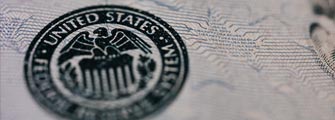 In the 2010s, art curator Ben Moore launched the ongoing Art Wars project. A pop-culture collaborative, Art Wars is a collection of over 300 creative works featuring stormtrooper armor. Most participants paint the iconic helmets artistically, and Moore periodically appears in public dressed in the cinematic soldiers’ uniform. Since 2013, approximately $40,000 in project proceeds have gone to charity.
In the 2010s, art curator Ben Moore launched the ongoing Art Wars project. A pop-culture collaborative, Art Wars is a collection of over 300 creative works featuring stormtrooper armor. Most participants paint the iconic helmets artistically, and Moore periodically appears in public dressed in the cinematic soldiers’ uniform. Since 2013, approximately $40,000 in project proceeds have gone to charity.
But the long-running initiative recently crashed into a legal entanglement over NFTs. So today, we’re breaking down the situation and dissecting the potential Art Wars NFT lawsuits.
Art Wars NFT Lawsuit Basics
Trigger Action: Ben Moore — curator of the long-running Art Wars project — photographed many of the collection’s pieces and created a 1,138-piece NFT collection of the images. He offered the lots on OpenSea.
Main Issue: According to reports, Moore, the NFT minter, didn’t secure permission from the artists to create NFTs of their works. At the time of this writing, 12 artists are allegedly considering legal action.
Where Things Stand Now: OpenSea or Moore, we’re unsure which, removed the auction from OpenSea a few days after launch. But by that time, it appeared to amass £5 million. Currently, several potential lawsuits are allegedly in the works.
Claimant (Artists) Argument
The artists considering legal action feel Moore erred by failing to seek and secure permission to use their pieces in the NFT collection. Basically, they’re arguing that Moore and Art Wars are unfairly profiting off their work.
Defense (Art Wars / Moore) Argument
Apparently, when Moore became aware of the problem, he sent an email to affected parties that read in part:
“[Art Wars] regrets that some of the artists were taken by surprise, and have since expressed a preference not to be included. Of course, we’ve respected those wishes.”
He went on to assure that participants would “receive royalties in the usual way.”
Why Are the Art Wars NFT Lawsuits Significant?
Like most recent NFT intellectual property lawsuits, the Art Wars legal tussle likely won’t make it to court. If we use precedent as a guide, they’ll reach an agreement, and all will be right in the galaxy.
Ultimately, we’re still in the very early days of NFTs, and people are still finding their legal sea legs. Who can mint NFTs? What are the intellectual property boundaries? What does a smart contract royalty agreement look like? And for the most part, people want contributors to profit — so settlements are typically easy to hash out.
But brand considerations are also a concern. After all, if anyone can use an artists’ work for an NFT, what recourse do creators have if they don’t want to be associated with a given NFT collection? Aretha Cambell, an artistic manager who represents some of the artists in the Art Wars dispute, explains:
“Whilst we totally appreciate there is a rush to profit, it is better to wait for the right partner that fits with the artist’s brand and ensure any legal uncertainties have been addressed from the start.”
It’s a fair point. And moving forward, parties will need to address NFT considerations in creative contracts. On the bright side, NFTs are providing a new revenue stream for artists who are leveraging blockchain to secure resale royalties.
Do you have an NFT contractual or legal issue? If so, and you’re ready to speak with an attorney in the field, get in touch.





